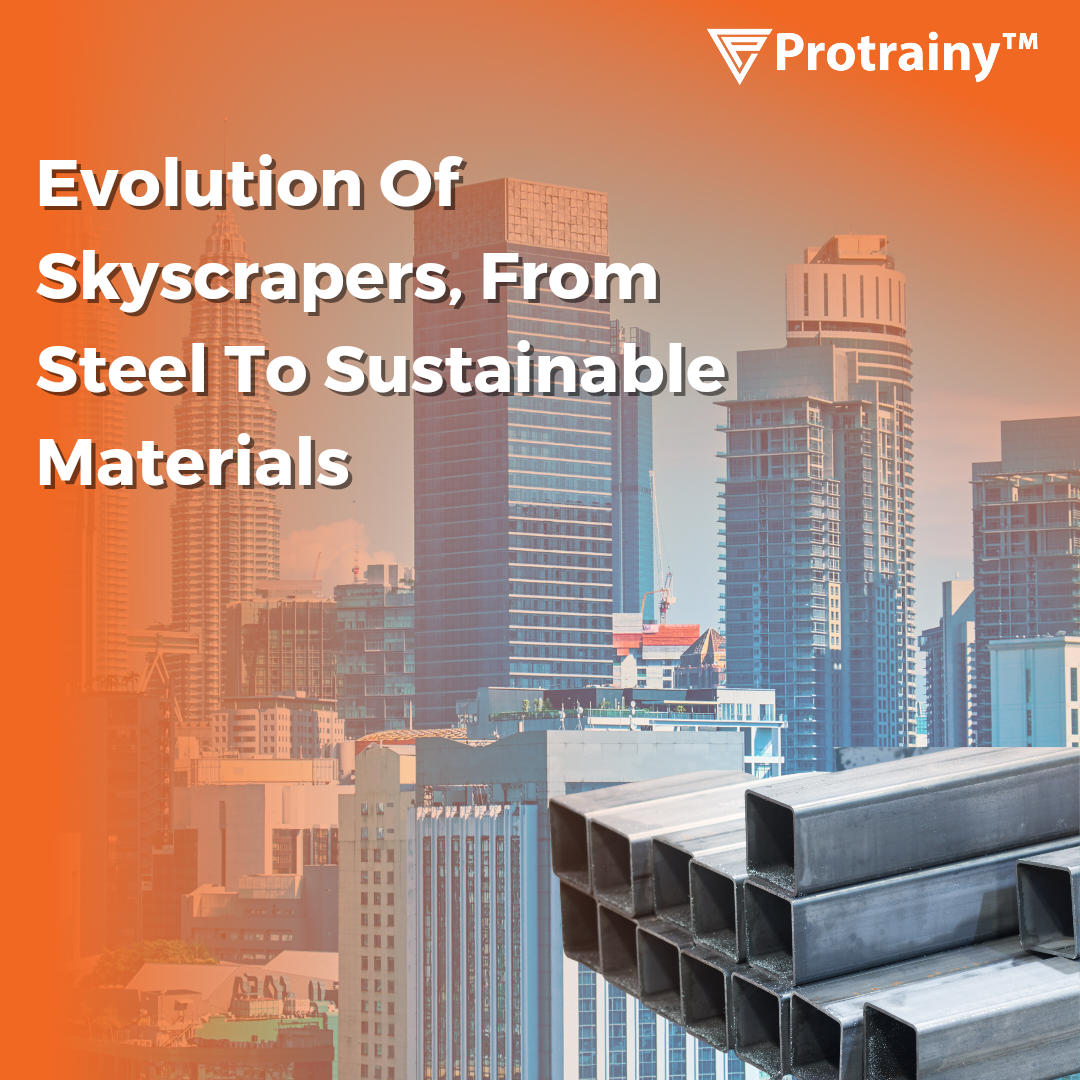Blogs
- Home
- Blogs
Evolution of Skyscrapers, from Steel to Sustainable Materials
Protrainy | Aug. 10, 2023, 2:15 p.m.

The skyscrapers, towering symbols of the modern metropolis, have been fascinating architectural marvels for more than a century. These iconic structures have grown not only in height but also in the materials used to build them. From pioneering the use of steel to today's emphasis on sustainable materials, the rise of skyscrapers reflects an ever-changing landscape of architectural innovation and environmental awareness. .
The late 19th century saw great increase of steel-framed skyscrapers, pushing into a new era of Construction. Pioneers like William Le Baron Jenney and Louis Sullivan of Chicago embraced the power of steel, allowing them to build taller and more ambitious structures. The Home Insurance Building (1885) is often recognized as the world's first skyscraper, demonstrating the potential of steel framing.
Pros and Cons of steel:
Steel has quickly become the material of choice for skyscrapers due to its exceptional strength-to-weight ratio. It allows architects to create open, bright spaces and overcome height limitations. Iconic landmarks like the Empire State Building (1931) and the Chrysler Building (1930) in New York showcased the dominance of steel in the world of skyscrapers.
However, steel skyscrapers come with their own set of challenges. Energy-intensive steel production has contributed to high carbon emissions, and the massive use of steel has raised concerns about resource depletion. As environmental awareness increased, architects and engineers began to look for sustainable alternatives to traditional steel and concrete. The turn of the 21st century has marked a shift towards eco-friendly designs and the use of sustainable materials. A notable example is the Taipei 101 (2004) building in Taiwan, designed to withstand earthquakes and typhoons while incorporating green building practices. The use of mass dampers tuned to reduce sway and energy-saving features marked a turning point in sustainable skyscraper design. Innovative materials for a greener future:
The rise of skyscrapers has seen the emergence of a wide variety of sustainable materials. Laminated timber (CLT) has gained popularity due to its regenerative properties and impressive durability. Wooden skyscrapers like Mjøstårnet in Norway illustrate the potential of wood in vertical construction. Similarly, advances in composite materials, such as carbon fiber-reinforced polymers, offer high strength with reduced weight, making them viable alternatives to traditional steel. These materials not only reduce carbon emissions, but also enable creative and innovative designs.
Modern skyscrapers go beyond materials to embrace sustainability holistically. Concepts such as biodesign, incorporating nature into architecture, and using renewable energy sources such as solar panels, help create buildings that are in harmony with the environment.
Conclusion:
The evolution of skyscrapers from steel to sustainable materials exemplifies the architecture industry's ability to respond to environmental challenges. While steel has revolutionized vertical construction, the adoption of sustainable materials reflects a commitment to reducing carbon emissions and promoting greener practices.
As cities continue to grow vertically, architects, engineers and developers face the dual challenge of pushing design boundaries while minimizing environmental impact. The development of skyscrapers proves that these two goals are not mutually exclusive, as innovative materials and sustainable practices will pave the way for a future skyline that is both impressive and user-friendly. with the environment.
